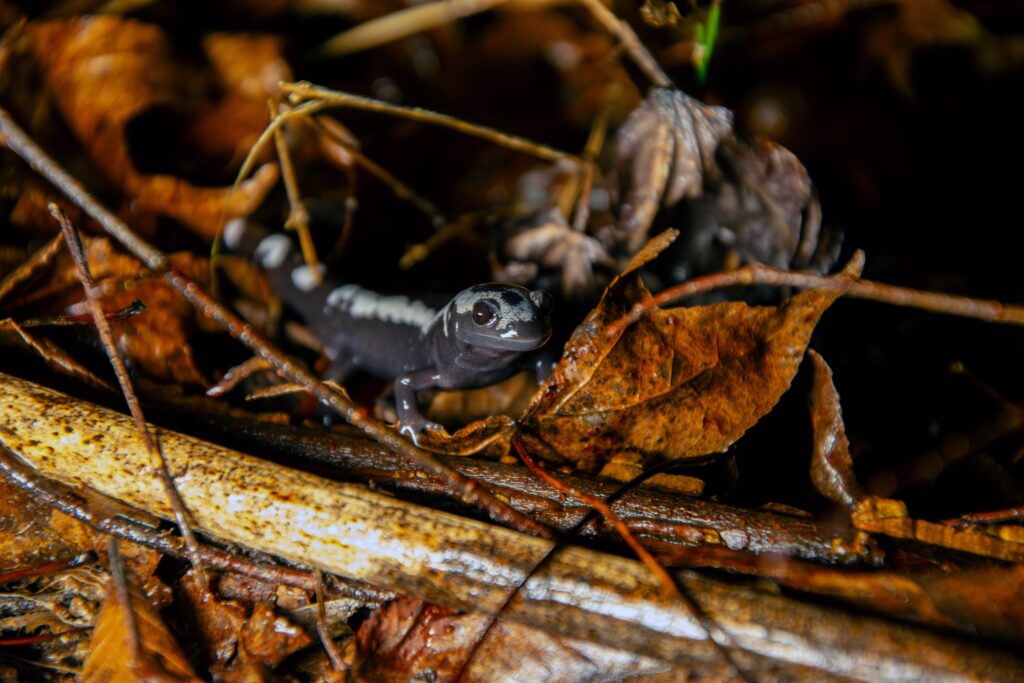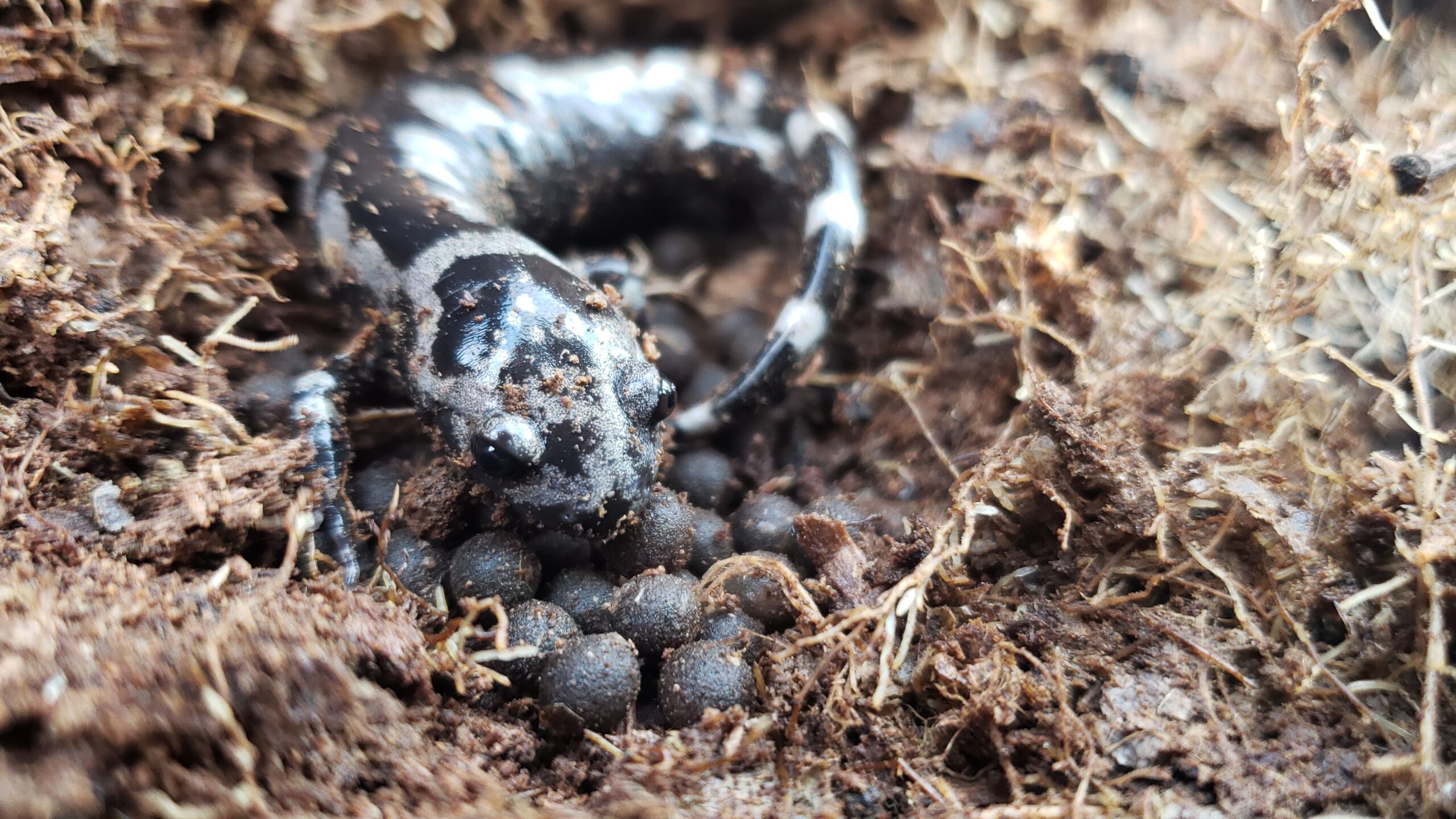Marbled Salamander (Ambystoma opacum)



Photos by Amanda Hurst unless otherwise noted
| Description: Marbled Salamanders grow to about 3.5-4.25 in (9 – 10.7 cm) in size and are stout-bodied and chubby in appearance. They can be identified by their black/dark brown body (including its venter) with light white/silvery crossbands on the dorsum. This species is sexually dimorphic, males tend to have white crossbands and females tend to have gray/silvery crossbands. These crossbands, though, are not present in newly transformed juveniles, which have flecks instead.
Range and Habitat: Marbled Salamanders are found throughout the Southeast but are absent from southeastern Georgia, peninsular Florida, and the higher elevations of the Appalachian Mountains. They occur in a variety of habitats, which can range from low-lying floodplains to wooded hillsides. They are a fossorial species, meaning they spend most of their lives underground and out of sight. Occasionally, they can be found under rocks, logs, and even trash (e.g. a discarded car wheel). They breed in fishless, temporary wetlands and vernal pools. Habits: Adult Marbled Salamanders are nocturnal and burrow or take refuge under logs or other cover during the day. They are perhaps most often encountered when they migrate to wetlands to breed on rainy nights in September and October. Marbled salamanders breed in autumn (unlike most other mole salamanders which breed in winter) and migrate to wetlands during/before a good rain to court and mate. Females will lay about 30-100 eggs in a depression on land (usually beneath a log or leaf litter). The female stays with her developing eggs until rain fills the wetland and triggers the eggs to hatch. If the rain never comes, then the eggs have the ability to over winter until spring to hatch. The aquatic larvae take from 2-9 months to metamorphose into terrestrial juveniles. About another 15 months are needed for the juveniles to reach maturity. Interesting Facts: A long-term study conducted at the Savannah River Ecological Laboratory shows that fluctuations in amphibian populations, including marbled salamanders, can be a natural phenomenon. Like many salamanders, Marbled Salamanders have poison glands in their tails to help deter predators. Conservation Status: These salamanders are considered common and are not protected in our region. However, this species reliance on temporary wetlands and forested habitats makes habitats loss a major conservation concern. Account Author: Justin Oguni, University of Georgia – edited by J.D. Willson |

